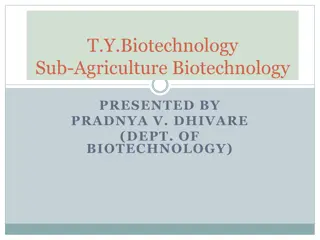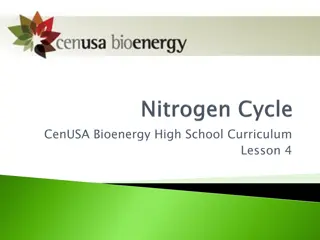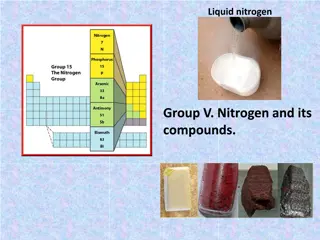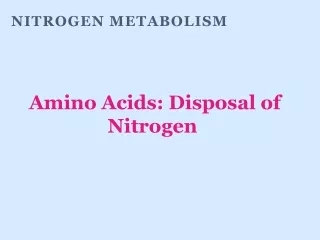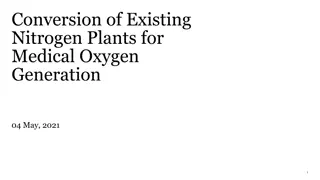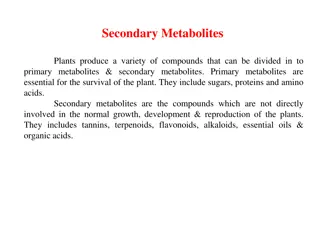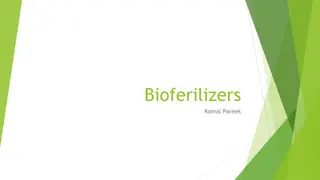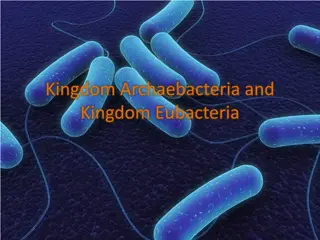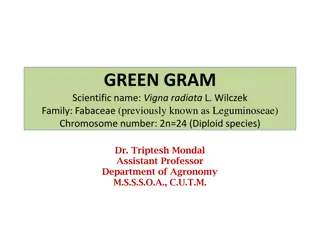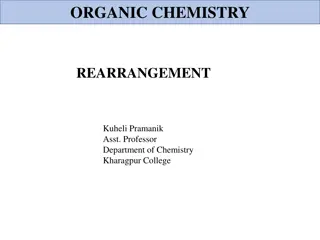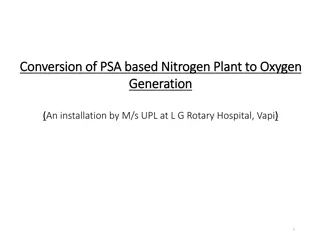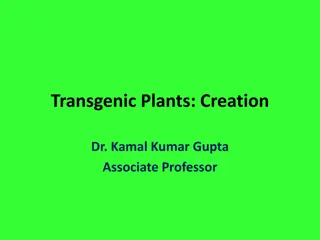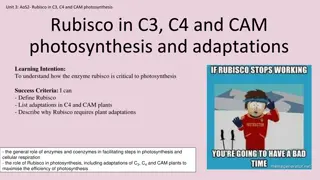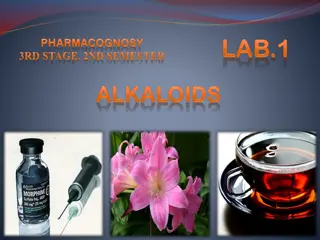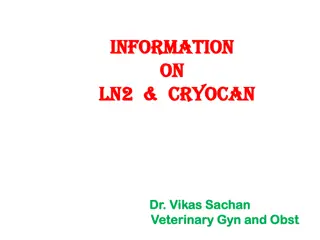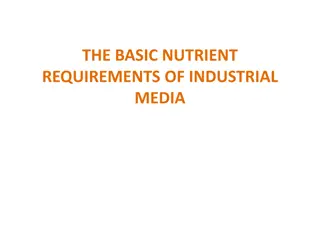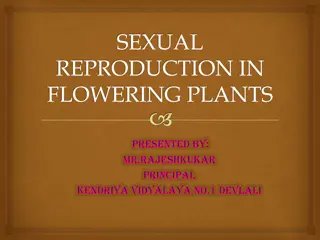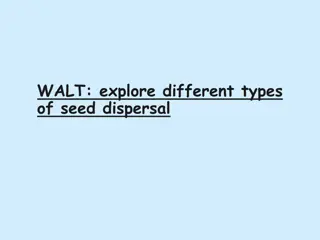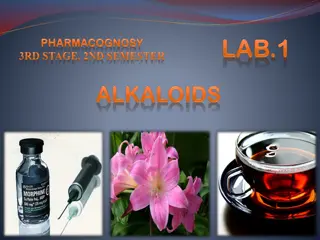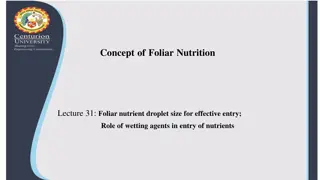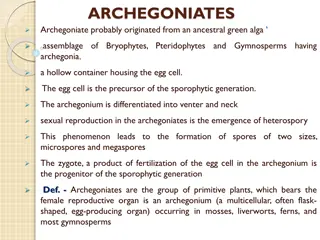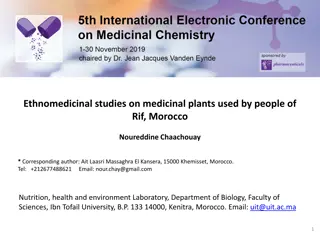Understanding Nitrogen Fixation Process in Plants
Nitrogen fixation is the conversion of atmospheric nitrogen into ammonia or nitrates by bacteria or industrial processes for plant absorption. Biological and abiological methods exist, with various bacteria and cyanobacteria involved in the process. Symbiotic relationships between these organisms and plants facilitate the conversion of nitrogen for plant growth.
Download Presentation

Please find below an Image/Link to download the presentation.
The content on the website is provided AS IS for your information and personal use only. It may not be sold, licensed, or shared on other websites without obtaining consent from the author. Download presentation by click this link. If you encounter any issues during the download, it is possible that the publisher has removed the file from their server.
E N D
Presentation Transcript
CLASS NOTES ON Nitrogen Fixation DR. SANJAY SRIVASTAVA BOTANY DEPTT. HARISH CHANDRA P.G.COLLEGE VARANASI
Nitrogen fixation is the process in which the nitrogen present in air is converted to ammonia or nitrates and added to soil in order to be absorbed by plants. The nitrogen present in air is in molecular form (N2) which has two nitrogen atoms joined by triple hydrogen bonds. Because of triple bonds, this form of nitrogen is inert and cannot be oxidised or reduced into a form, readily asorbed to plants. Nitrogen fixation may be BIOLOGICAL or ABIOLOGICAL. Biological Nitrogen fixation (BNF) is a process which is brought about by several species of bacteria and cyanobacteria. Such nitrogen fixing organism are called DIAZOTROPHS. This process occurs in the presence of enzyme, NITROGENASE. Abiological Nitrogen fixation is a process which is not mediated by living organisms. It occurs either naturally in atmosphere or in industries. In atmosphere, during lightening and thunder, atmospheric nitogen (N2) is oxidised and converted to nitrogen oxide (NOx). This comes to earth as nitrous or nitric acid and finaly converted to nitrates in soil. In industries (Urea manufacturing Plants), Nitrogen is reduced to ammonia and then urea at very high temperature (500oC) and high pressure (300 atm.) in the presence of Fe as catalyst. It is called HABER-BOSCH process.
Biological Nitrogen fixation (BNF) It is done by many Bacteria and Cyanobacteria Bacterial N2 fixation : Both free living and symbiotic bacteria are involved in this process. Free living Bacteria They are as follows- Aeorobic forms- Azotobacter, Beijerinckia Anaerobic forms- Bacillus, Klebsiella, Clostridium, Rhodospirillum, Chromatium Symbiotic Bacteria It mainly involves the Rhizobia group of Bacteria. Rhizobia group contains several genera such as Rhizobium, Bradyrhizobium, Azorhizobium, Photorhizobium and Sinorhizobium. Each of these genera has again been divided into several species and then into varieties. Examples : Rhizobium leguminosarum bv. viciae in association with Pea (Pisum) R. leguminosarum bv. phaseoli in association with Bean (Phaseolus) R. Leguminosarum bv. trifoli association with Clover (Trifolium sp.) Some other associations are Bradyrhizobium Soybean ; Azorhizobium Sesbania (Dhaincha) ; Sinorhizobium- Alfa alfa ; Photorhizobium Aeschenomene (Aquatic plant)
In Sesbania rostrata there are two types of nodules stem and root. Stem nodules contain Azorhizobium whereas root nodules contain Rhizobium as N2 fixer It is observed that Rhizobia group mainly associates with leguminous plants ( exception is Parasponia, a non-legume which forms root nodules in association with Bradyrhizobium). Non-legumes showing symbiotic association with N2 fixing bacteria : Non-legumes like Casuarina, Myrica, Alnus show symbioticassociation with Frankia (an Actinomycetes filamentous bacteria) Leaf nodules of Psychotria contain Klebsiella Cyanobacterial N2fixation : Both free living and symbiotic Cyanobacteria are involved in this process. Free living Cyanobacteria involved in N2 fixation are as follows- Anabaena, Nostoc, Calothrix, Lyngbia, Aulosira, Cylindrospermum, Trichodesmium Cylindrospermum is particularly found in sugarcane and maize fields. Aulosira fertilissima is found in rice fields.
Symbiotic Cyanobacteria involved in N2 fixation : Anabaena and Nostoc show symbiotic association with many plant species : Some examples are -Lobaria pulmonaria (Lichen),Anthoceros and Porella navicubis (Bryophytes), Azolla (Fern), Cycas (Gymnosperm) coralloid roots, Gunnera (Angiosperm) stem glands NODULATION IN LEGUMES : It is the complex process of invasion of roots of legumes by N2 fixing bacteria and formation of root nodules. Steps involved are as under : 1. These bacteria enter through root hairs forming a thread like structure called INFECTION THREAD. 2. Through root hair they reach cortical cells. 3. They remain in cytoplasm of cortical cells in small groups encircled by a peribacteroid membrane. Now they are called bacteroids. 4. The cortical cells invaded by these bacteria become polyploid and undergo massive multiplication to form root nodules. 5. Bacteroids are irregular, polyhedral bacterial cells which are specialized for nitrogen fixation. 6. The peribacteroid membrane is surrounded by abundant LEGHAEMOGLOBIN. 7. Leghaemoglobin is a hemeprotein. It acts as an oxygen scavenger. It protects the NITROGENASE enzyme from oxidative inactivation by Oxygen. More so, it also provides restricted dose of oxygen to bacteria for oxidative ATP generation. 8. Leghaemoglobin has two components : a globin part (apoprotein) and a heme part (a cofactor which has a Fe bound to Porphyrin)
Biology of Nitrogen fixation: The reaction for fixation of one Nitrogen molecule is as follows : N2+8e- + 8H+ + 16 ATP 2NH3 + 16 ADP + 16 Pi + H2 The reaction is catalysed by the enzyme Nitrogenase. The enzyme gets inactivated in the presence of Oxygen. Nitrogenase has two components. 1. Mo-Fe Protein component (180 K Da mass): It is called dinitrogenase. This component has 4 subunits and each unit has 2 Mo-Fe-S cluster. 2. Fe Protein component (30-72 K Da mass) : It is called dinitrogenase reductase. This component has 2 subunits. Each subunit has one Fe-S cluster. The reducing power in the form of 8 H+ is provided by strong reducing agents, Ferrodoxin and flavodoxin. ATP comes from the respiratory process of organism. Carbohydrates, polyols and organic acids are the substrates used in the respiratory process.
N22H++2e- NH=NH 2H++2e-H2N-NH22H++2e- 2NH32H++2e-NH4+ NitrogenDiimideHydrazineAmmoniaAmmonium molecule
Nitrate Metabolism : It occurs in plants once nitrates is absorbed by the roots. 1. Nitrate Reduction : It occurs in roots or leaves. Nitrate (NO3-) is reduced in the presence of enzyme Nitrate Reductase into Nitrite (NO2-) and water. NADPH is the reducing agent. 2. Reduction of nitrite to ammonia : In this process (NO2-) is reduced into ammonium (NH4+) in the presence of enzyme Nitrite reductase and Ferrodoxin as reducing agent. NH4+isfurther used to produce Glutamine (aminoacid) in the presence of enzyme Glutamine synthetase using Mg, Mn or Co as cofactor. Using Glutamine, many other aminoacids are synthesized. Cereals absorb NO3- better than NH4+. Potato, pine apple, rice, prefer NH4+ over NO3-. Alkaline or neutral pH favours NH4+ absorption. Acidic pH favours NO3- absorption.
NITRIFICATION : It is a process of biological oxidation of NH3 into nitrite and then into nitrate. These two steps are performed by two separate type of bacteria. Step 1 : Here ammonia is converted into nitrite by bacteria such as Nitrosococcus, Nitrosomonas, Nitrosolobus, Nitrosospira and also by some fungi such as Aspergillus flavus etc. 2NH3 + 3O2 2NO2+2H+ +2H2O + Energy Step 2 : In this process nitrite is oxidized into nitrate. The bacterial species involved in the process are Nitrobacter, Nitrocystis, Nitrospina, Nitrococcus etc. Besides some fungal species also perform the process- Penicillium, Aspergillus flavus etc. 2NO2 + O2 2NO3 + Energy Most of the nitrifying bacteria are chemosynthetic type and they bring out oxidation of these compounds in order to obtain energy for food synthesis.
DENITRIFICATION : It is the process in which fixed nitrogen in soil which is in the form of nitrates is converted back into molecular nitrogen (N2) and released in air. This happens under anaerobic or water logged conditions in soil. Many microorganism under these conditions, use nitrates to obtain oxygen. 2NO3 2NO2 2NO N2O N2 + O Examples of such microorganisms are Pseudomonas denitrificans, Thiobacillus denitrificans, Macrococcus denitrificans etc. THANKS


